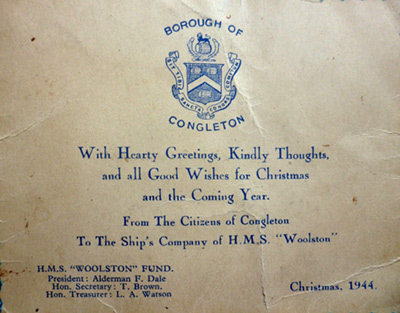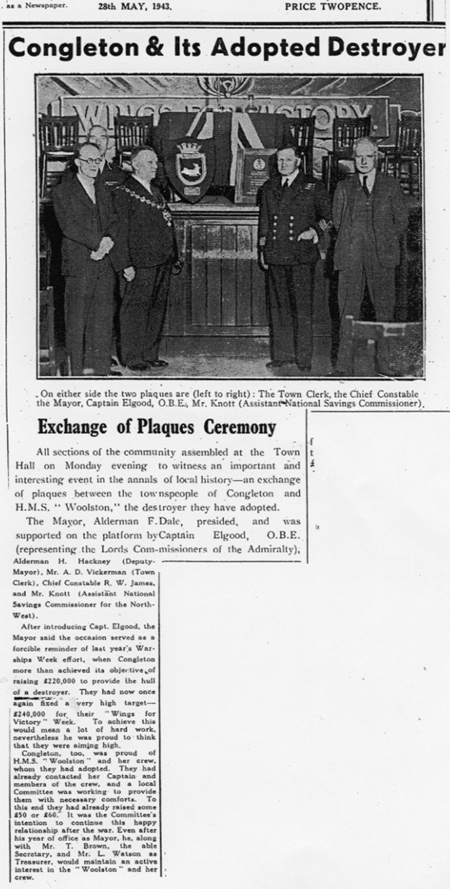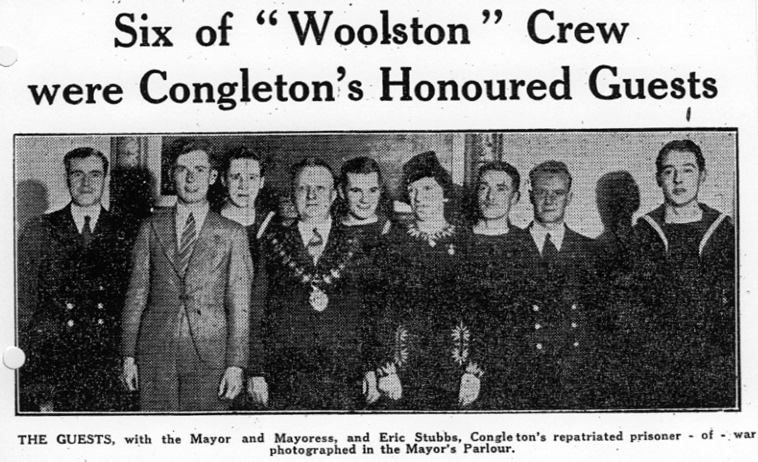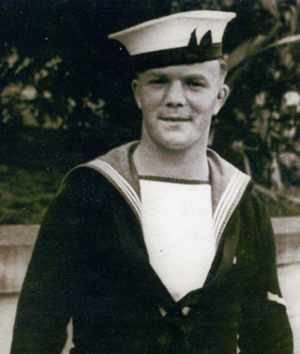
 HMS WOOLSTON
HMS WOOLSTON
Congleton adopts HMS Woolston
Warships Week 1942
 Warship
Weeks were introduced throughout the country in 1942 as a means of
raising money for the building of new warships. Towns and cities were
asked to raise sufficient money to pay for the cost of building the
hull of a new warship. Cities would aim to raise enough to adopt
battleships and aircraft carriers, while towns and villages would focus
on cruisers and destroyers. Once the target money for the ship was
saved, the community would be allocated a ship of that size and would
adopt the ship and its crew.
Warship
Weeks were introduced throughout the country in 1942 as a means of
raising money for the building of new warships. Towns and cities were
asked to raise sufficient money to pay for the cost of building the
hull of a new warship. Cities would aim to raise enough to adopt
battleships and aircraft carriers, while towns and villages would focus
on cruisers and destroyers. Once the target money for the ship was
saved, the community would be allocated a ship of that size and would
adopt the ship and its crew.
Local charity organisations, churches and schools would provide the
crews of the adopted ship with gloves, woollen socks and balaclavas.
Children would often write letters and send cards to the crew. When
possible, officers and men from the adopted ship would visit the local
community. The ship’s commanding officer would exchange plaques,
objects and photographs with the city or town that reached the target
set, and an adoption would begin. The number of warships adopted was
over 1200, and this number included the battleships, cruisers,
destroyers and trawlers.
The total amount raised for the war effort was £955,611,589. The
campaigns were organised by the National War Savings Committee with the
full support of the Admiralty. There were a total of 1,178 warship
weeks organised during the campaign’s duration, involving a total of
1,273 districts. A press announcement quoted the adoption of eight
battleships, four carriers, forty-nine cruisers, three hundred and one
destroyers, twenty-five submarines, one hundred and sixty-four
corvettes and frigates and two hundred and eighty-eight minesweepers.


 The Cheshire town of Congleton raised
£220,00, the cost of building the hull of a destroyer and adopted
HMS Woolston, a V&W Class
destroyer. The local newspaper often reported stories about HMS Woolston. In May 1943 the town and
her adopted ship exchanged plaques and six of Woolston's crew were honoured
guests of the town in November 1943:
The Cheshire town of Congleton raised
£220,00, the cost of building the hull of a destroyer and adopted
HMS Woolston, a V&W Class
destroyer. The local newspaper often reported stories about HMS Woolston. In May 1943 the town and
her adopted ship exchanged plaques and six of Woolston's crew were honoured
guests of the town in November 1943: